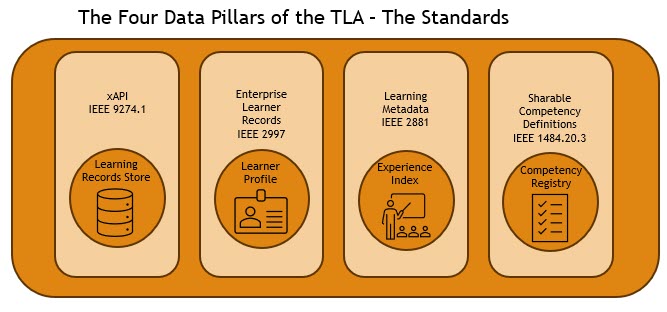Background
 The Advanced Distributed Learning Initiative (ADL) introduced the term Total Learning Architecture (TLA) in 2016. The Total Learning Architecture (TLA) is a U.S. Department of Defense (DoD)-backed framework designed to modernize and connect learning systems so that data about individual learning experiences, performance, and competencies can flow securely and meaningfully across technologies and organizations. TLA is not a single product, platform, or tool. It’s an open architecture and set of standards that enables interoperability between learning systems like LMSs, LRSs, adaptive tutors, competency management systems, and more.
The Advanced Distributed Learning Initiative (ADL) introduced the term Total Learning Architecture (TLA) in 2016. The Total Learning Architecture (TLA) is a U.S. Department of Defense (DoD)-backed framework designed to modernize and connect learning systems so that data about individual learning experiences, performance, and competencies can flow securely and meaningfully across technologies and organizations. TLA is not a single product, platform, or tool. It’s an open architecture and set of standards that enables interoperability between learning systems like LMSs, LRSs, adaptive tutors, competency management systems, and more.
The key objectives of the TLA are:
-
Data interoperability across systems and vendors
-
Learner-centric support for lifelong and personalized learning
-
Modular and adaptive instructional design
-
Secure and privacy-respecting data exchange
-
Evidence-based decision-making using learning analytics
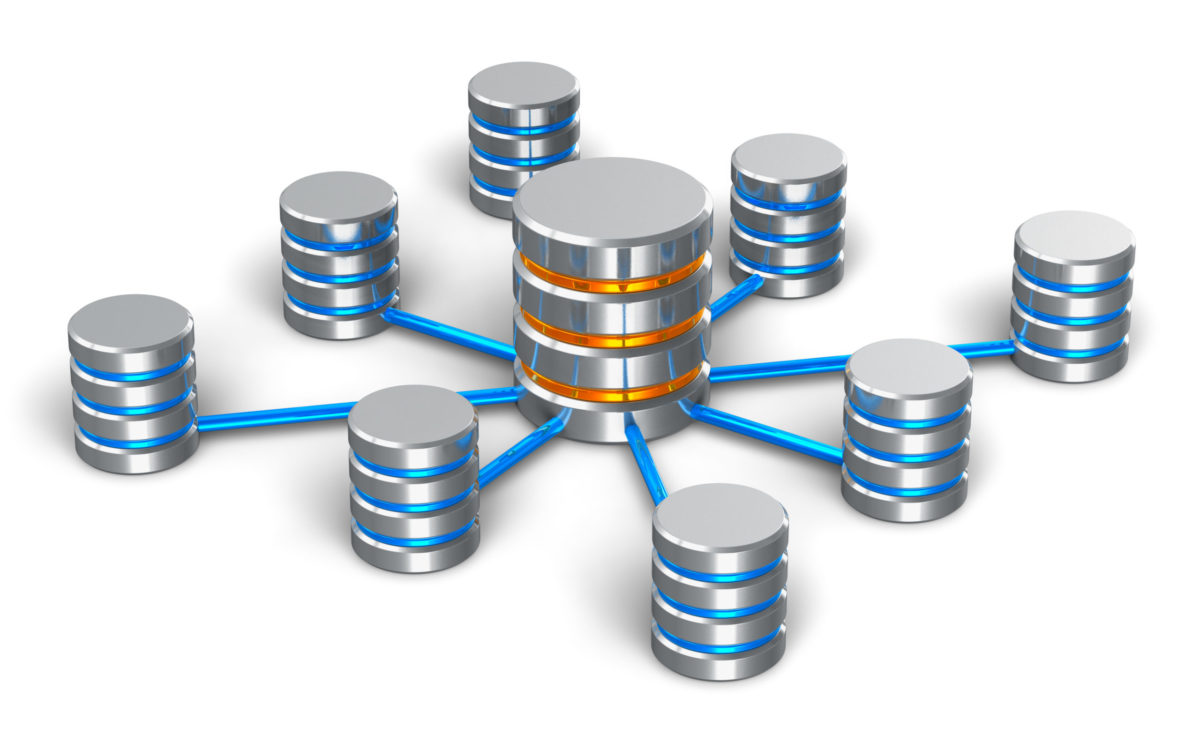 In essence, the TLA is a fully integrated learning ecosystem that is honed to the needs of an organization. It provides a clear line-of-sight for a learner’s activities, competencies, and performance over the course of their career as well as their current state. The robust metadata model is a major pillar of the TLA allowing different systems to maintain their own data with a defined linkage from one to the next. For example, an Enterprise Learner Record may show that a person has achieved a specific competency level. The competency and its proficiency levels may be defined in a Competency Repository so the same testing rubric is applied to every student, eliminating subjectivity and providing a definitive assessment of a student’s skills.
In essence, the TLA is a fully integrated learning ecosystem that is honed to the needs of an organization. It provides a clear line-of-sight for a learner’s activities, competencies, and performance over the course of their career as well as their current state. The robust metadata model is a major pillar of the TLA allowing different systems to maintain their own data with a defined linkage from one to the next. For example, an Enterprise Learner Record may show that a person has achieved a specific competency level. The competency and its proficiency levels may be defined in a Competency Repository so the same testing rubric is applied to every student, eliminating subjectivity and providing a definitive assessment of a student’s skills.
This data may then be used to adapt learning interventions, like simulations, based on the skills a student has mastered and those that require improvement. All of this is possible because xAPI Profiles define how different types of learning data are stored.
Within the TLA the goal is to connect siloed learning system, enable adaptive learning and align learning with operational needs.
Pillars of the TLA
The Total Learning Architecture (TLA) is built on four data pillars that support its goal of creating a scalable, interoperable, and personalized learning ecosystem. Each of these pillars is underpinned by learning standards initiated by the ADL. Most of these standards have now moved to the IEEE for formalization and ongoing maintenance. The four pillars are:
Learning Activity Data or xAPI (IEEE 9274.1)
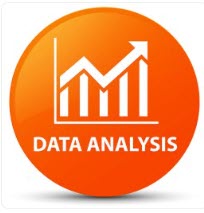 The Experience API, commonly referred to as xAPI, captures learning experiences, what a learner does, across environments, platforms and modalities in a standardized way. Because xAPI tracks learning behavior and outcomes, it enabled analytics, adaptive learning and automation such as recommendations for supplemental learning. xAPI use cases are defined in xAPI profiles such as a video profile and cmi5, the profile for using content from a learning management system (LMS).
The Experience API, commonly referred to as xAPI, captures learning experiences, what a learner does, across environments, platforms and modalities in a standardized way. Because xAPI tracks learning behavior and outcomes, it enabled analytics, adaptive learning and automation such as recommendations for supplemental learning. xAPI use cases are defined in xAPI profiles such as a video profile and cmi5, the profile for using content from a learning management system (LMS).
Learning Metadata (IEEE P2881)
Learning metadata enables discovery and mapping of learning resources by applying a structured data model. Metadata tags and descriptors that identify and describe learning content in meaningful and consistent ways. Learning Metadata is critical to allow of content discovery and searching across federated systems. Learning Metadata can be used to recommend, reuse, or even exclude content in an adaptive learning environment. Moreover, Metadata allows for the alignment of learner profiles and competencies.
Sharable Competency Definitions (IEEE 1484.20.1)
 Competency definitions describe skills, competencies, and capabilities needed by organization in a structured way. It goes on to define the abilities and behaviors that learners are expected to demonstrate. This data is used to map content and assessments to real-world skills to enable competency-based learning and credentialing. This accurate and consistent use of competency definitions across a learning ecosystem helps align skills to job roles and supports the nimble creation of work teams based on requirements of the team’s task(s).
Competency definitions describe skills, competencies, and capabilities needed by organization in a structured way. It goes on to define the abilities and behaviors that learners are expected to demonstrate. This data is used to map content and assessments to real-world skills to enable competency-based learning and credentialing. This accurate and consistent use of competency definitions across a learning ecosystem helps align skills to job roles and supports the nimble creation of work teams based on requirements of the team’s task(s).
Enterprise Learner Records (IEEE P2997)
The Enterprise Learner Records standard tracks an individual’s proficiency and career trajectory in a comprehensive and interoperable way. It becomes a portable record of a learner’s identity, preferences, goals, achievements and history. An individual’s ELR data can be used to support personalization and adaptivity in learning and can be used to inform HR systems and decisions. A critical feature of the ELR is that it is that it is a trusted, auditable, and validated record of employee performance made possible by the Learning Metadata.
The Roadblocks – Why isn’t the TLA in widescale use?
There are several roadblocks that have prevented the TLA’s widescale use to this point. These roadblocks are a combination of technical obstacles and organizational/cultural challenges. These include:

Maturity
Remember the TLA isn’t a product you can install and start using. It’s a framework along with a set of standards which requires integration across many systems like Learning Management Systems, Learning Records Stores, Human Resource Information Systems, and Competency and Credentialing applications, Simulations (synthetic learning environments) and dashboard/analytics just to name a few. Many organizations lack the technical infrastructure and expertise to implement the TLA fully. Additionally, some of the elements of the TLA are still in standards development and only used by early adopters.
Incompatibility of Legacy Systems and Limited Vendor Readiness
Most current Learning Management and HR system use proprietary data formats or older standards like SCORM that don’t plug-in cleanly to a larger ecosystem. Replacing or upgrading legacy system to support xAPI and open competency frameworks can require significant investment and long migration times. In addition to custom development, interoperability requires vendor coordination which poses its own challenge.
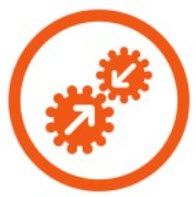 Data Privacy and Ownership
Data Privacy and Ownership
To make the TLA work, data must be shared between systems. Remember, we are breaking down the silos of stand-alone learning systems. Sharing data rases many questions of its own. Not only a concern with proprietary systems and processes that need to protect their intellectual properties but also:
-
- Who owns the data?
- How is the data protected and under what legal requirements?
- Can data follow a learner across roles and even organizations? While it’s common to expect a university to share a transcript with an employer, it’s less common for one company to provide training history to a new employer when an employee changes organization.
Unfortunately, there isn’t an easy technical solution to this policy challenge. Adoption will often stall due to lack of clear governance and established trust models across and within organizations.
xACTION – The Solution
While xACTION cannot solve policy questions like, “Who owns the data?”, it does help remove barriers associated with system incompatibility and data management reducing the technical burden of implementation. xACTION does this by leveraging it’s three primary functions, Rule-based REST API Triggers, Intellegent Statement Forwarding, and Statement Transformation. To learn more about each of these capabilities of xACTION click here for an introduction to the system.

xACTION’s role in the TLA is centered around real-time xAPI statement processing and a complex, patented, pattern-matching engine that analyzes xAPI data triggers some type of action. include real-time xAPI statement processing, rule-based statement forwarding. xACTION receives xAPI statements from multiple sources. These sources can include learning management system, learning records stores, simulations, internet of things appliances, mobile apps, social media, performance support systems, and others. Essentially any system generating or housing xAPI statements. xACTION then applies trigger rules—logic-based patterns triggered only when set conditions are satisfied. For example, a pattern may include training activities that must be completed to a satisfactory level, a competency assessment/observation, and a fixed number of simulator hours before an action is triggered. So, what can the trigger do?
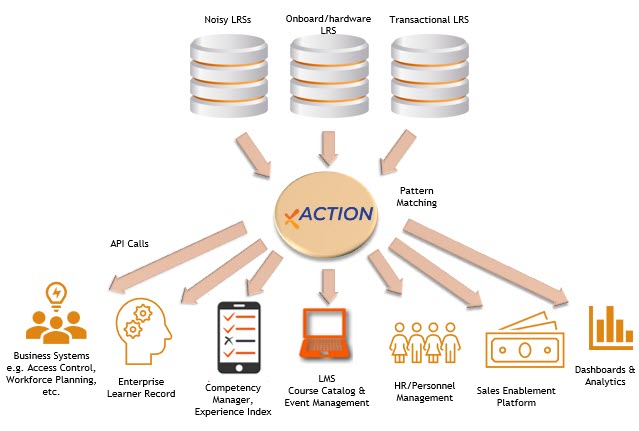 Overcoming Legacy/Non-xAPI Systems
Overcoming Legacy/Non-xAPI Systems
Triggers can update a legacy system that is not xAPI compatible by calling that system’s or a third-party’s REST API to update data in that system. For example, a legacy HRIS or Competency Assertion System may be updated with the students performance to issue a certification or assign a competency level based on the combination of xAPI data from various systems. The legacy system doesn’t even know that it’s being updated based on xAPI data.
 Noise Reduction & Mindful Data Routing
Noise Reduction & Mindful Data Routing
xAPI data is historically “chatty”. That is, xAPI statements can be written for almost every action a student takes often making it daunting to find just the data you need. xACTION will act as a traffic signal for xAPI data by intelligently forwarding specific statements from a noisy to an authoritative LRS. For example, the a final completion record can be automatically forwarded to a system of record without including all the user activity data like pages viewed, interactions completed, and if the learner paused or fast forwarded through a video. An instructional design team may not be interested in personal data at all but wants to visualize how students interact with data. xACTION can forward anonymized statements to another LMS for user behavior analysis based on another rule-set and trigger.
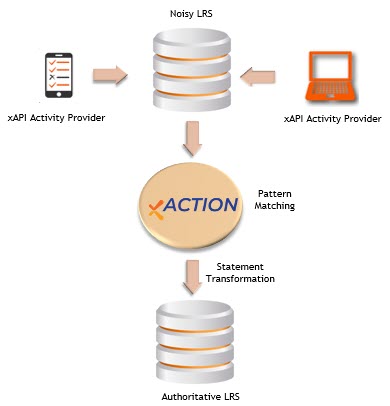 Data Governance and Standardization
Data Governance and Standardization
xACTION takes on the challenge of using multiple learning records providers (authoring tools, mobile apps, etc.) that may all use slightly different vocabulary and structure for their xAPI statements. A rule-set is created in xACTION to trigger the creation of new xAPI statement. This new statement follows your organization’s data model to ensure consistent reporting across learning activities. The newly tranformed statement can be sent back to the originatingLRS or to another LRS.
In essence, xACTION turn your raw xAPI data into operational learning data functionally integrated across enterprise systems in a code-free way without custom middleware development.
Moving Forward
Ready to take control of your learning data and automate your learning ecosystem? Contact RISC today to learn more about xACTION and it’s alignment with the TLA risc@risc-inc.com. Want to explore a bit more on your own, check out these short videos on setting up and leveraging xACTION in your organization.
- Importing Rules into xACTION
- Using xACTION to issue badges in Accredable and Credley
- Using JSON to Speed Rule Creation
- Updating the Live Resume System with xACTION
References:

